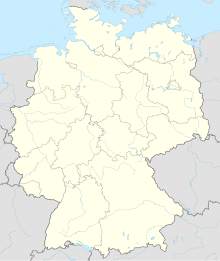Ethnological Museum of Berlin

|
|
|
Location of Ethnological Museum in Berlin, Germany
|
|
| Established | Original in 1873, new building in 1886, and after World War II rebuilt in present form in 1970 |
|---|---|
| Location | Dahlem |
| Coordinates | 52°27′24″N 13°17′31″E / 52.4567°N 13.2919°E |
| Type | Ethnological |
| Director | Viola König |
| Website | www |
The Ethnological Museum of Berlin (German: Ethnologisches Museum Berlin) is one of the Berlin State Museums (German: Staatliche Museen zu Berlin), the de facto national collection of the Federal Republic of Germany. It is presently located in the museum complex in Dahlem, along with the Museum of Asian Art (German: Museum für Asiatische Kunst) and the Museum of European Cultures (German: Museum Europäischer Kulturen). The museum holds more than 500,000 objects and is one of the largest and most important collections of works of art and culture from outside Europe in the world. Its highlights include important objects from the Sepik River, Hawaii, the Kingdom of Benin, Cameroon, Congo, Tanzania, China, the Pacific Coast of North America, Mesoamerica, the Andes, as well as one of the first ethnomusicology collections of sound recordings (the Berliner Phonogramm-Archiv)
The Ethnological Museum was founded in 1873 and opened its doors in 1886 as the Royal Museum for Ethnology (German: Königliches Museum für Völkerkunde), but its roots go back to the 17th century Kunstkammer of the rulers of Brandenburg-Prussia. As the museum’s collections expanded in the early twentieth century, the museum quickly outgrew its facility in the center of Berlin on Königgrätzer Straße (today named Stresemannstraße). A new building was erected in Dahlem to house the museum’s store rooms and study collections. In the Second World War, the main building of the museum was heavily damaged. It was demolished in 1961, and the buildings in Dahlem (in what was then West Berlin) were reconfigured to serve as the museum’s exhibition spaces.
...
Wikipedia


